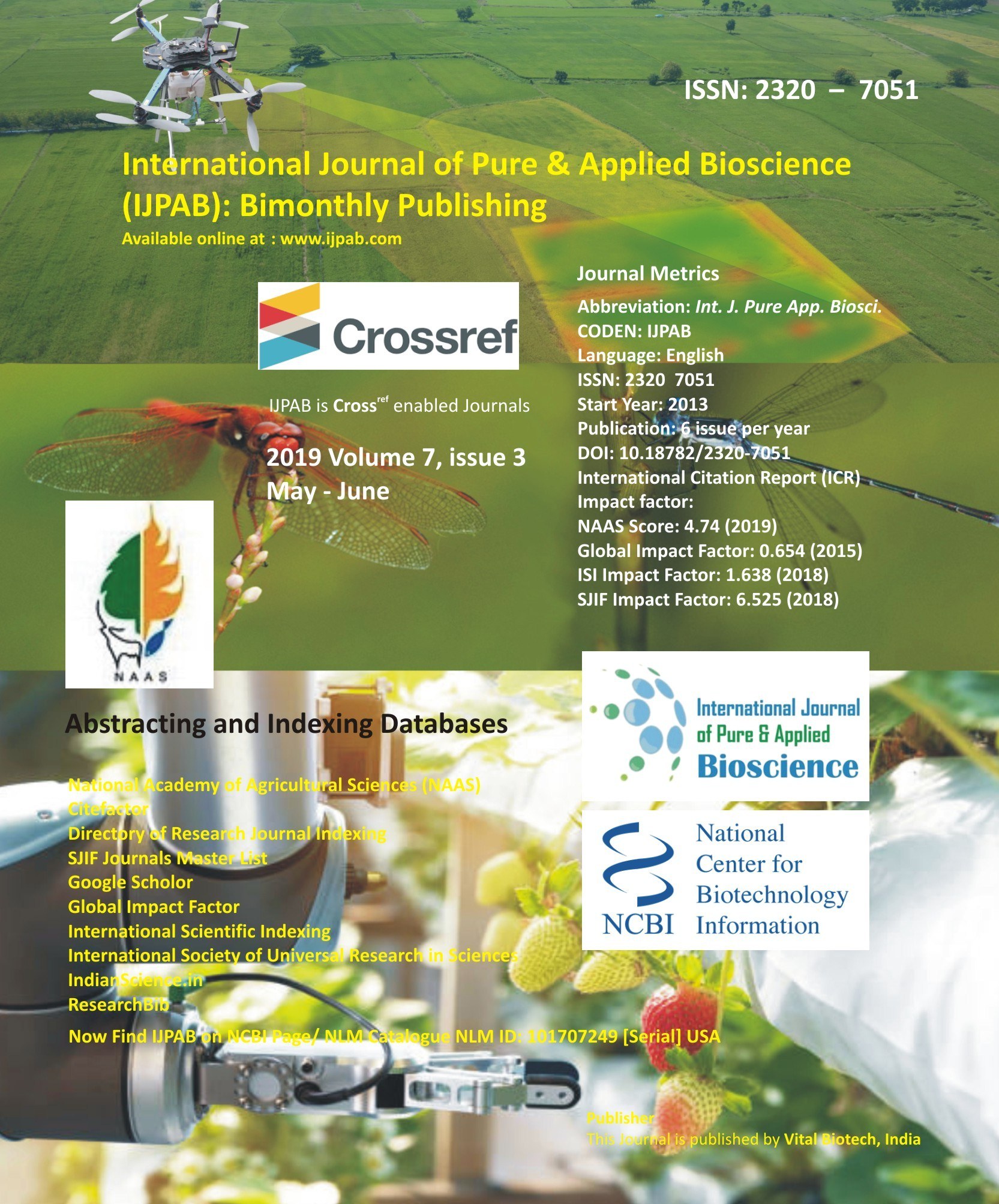
-
No. 772, Basant Vihar, Kota
Rajasthan-324009 India
-
Call Us On
+91 9784677044
-
Mail Us @
editor@ijpab.com
International Journal of Pure & Applied Bioscience (IJPAB)
Year : 2019, Volume : 7, Issue : 3
First page : (245) Last page : (248)
Article doi: : http://dx.doi.org/10.18782/2320-7051.7499
Breeding Management Practices of Goats Followed by Tribal Farmers in Rajasthan
P. C. Regar1*, M. L. Kamboj2, Manish Sawant3, Girish J. Panchbhai4 and N. S. Rawat5
1 Assistant Professor, Krishi Vigyan Kendra, Rajsamand, MPUAT, Udaipur (Rajasthan)
2 Principal Scientist, LP M Division, NDRI, Karnal, Haryana-132001
3Assistant Professor, Dept. of Veterinary Extension, Bombay Veterinary College, Mumbai, Maharashtra
4Assistant Professor, Dept. of LPM, Post Graduate Institute of Veterinary and Animal Sciences, Akola
5Assistant Professor, Dept. of LPM, College of Veterinary Science and Animal Husbandry, Rewa, M.P
*Corresponding Author E-mail: drmanishvet@rediffmail.com
Received: 15.04.2019 | Revised: 18.05.2019 | Accepted: 24.05.2019
ABSTRACT
The aim of present study was to assess the breeding management practices of tribal farmers in Rajasthan. A total of 120 tribal goat farmers were selected from 12 villages from 6 blocks in 3 tribal dominated districts viz., Banswara, Dungarpur and Udaipur. Ten farmers from each village were selected purposively. The selected goat farmers were grouped into three categories based on flock size as small (<25 goats, N= 60), medium (26-50 goats, N = 36) and large (>50 goats, N = 24). Majority of goat farmers hold a small flock size. Overall 49.17% of farmers used non-descript whereas 50.83% used improved breeding bucks. The per cent of farmers with small, medium and large flocks used their own breeding bucks was 53.33, 55.56 and 75%, whereas 46.67, 44.44 and 25 % used community/ neighbor’s breeding buck respectively for breeding purpose. Majority (71.67 %) of the farmers were using their own breeding bucks whereas 30, 38.89 and 41.67 % of farmers were not providing any extra care to pregnant goats in small, medium and large groups of farmers respectively. The percentage of farmers who castrated their male kids among small, medium and large groups of farmers respectively was 23.33, 36.11 and 54.17 % respectively. The data on selection criteria of bucks indicated that an overall average of 36.67 per cent respondents selected breeding bucks on the basis of body weight whereas 45 per cent respondents selected their breeding bucks on the basis of their physical appearance/breed characteristics. Result revealed that overall age at first mating was between 10-15 months in case of 71.67 per cent of farmers The average number of goats covered by a buck was 50-100 goats as reported by a majority of respondents (60.83 %). It was concluded that breeding management practices were mostly traditional without much regard to scientific recommendations.
Key words: Tribal, Goat farming, Breeding, Breeding system
Full Text : PDF; Journal doi : http://dx.doi.org/10.18782
Cite this article: Regar, P.C., Kamboj, M.L., Sawant, M., Girish, J., Panchbhai and Rawat, N. S., Breeding management practices of goats followed by tribal farmers in Rajasthan, Int. J. Pure App. Biosci.7(3): 245-248 (2019). doi: http://dx.doi.org/10.18782/2320-7051.7499

